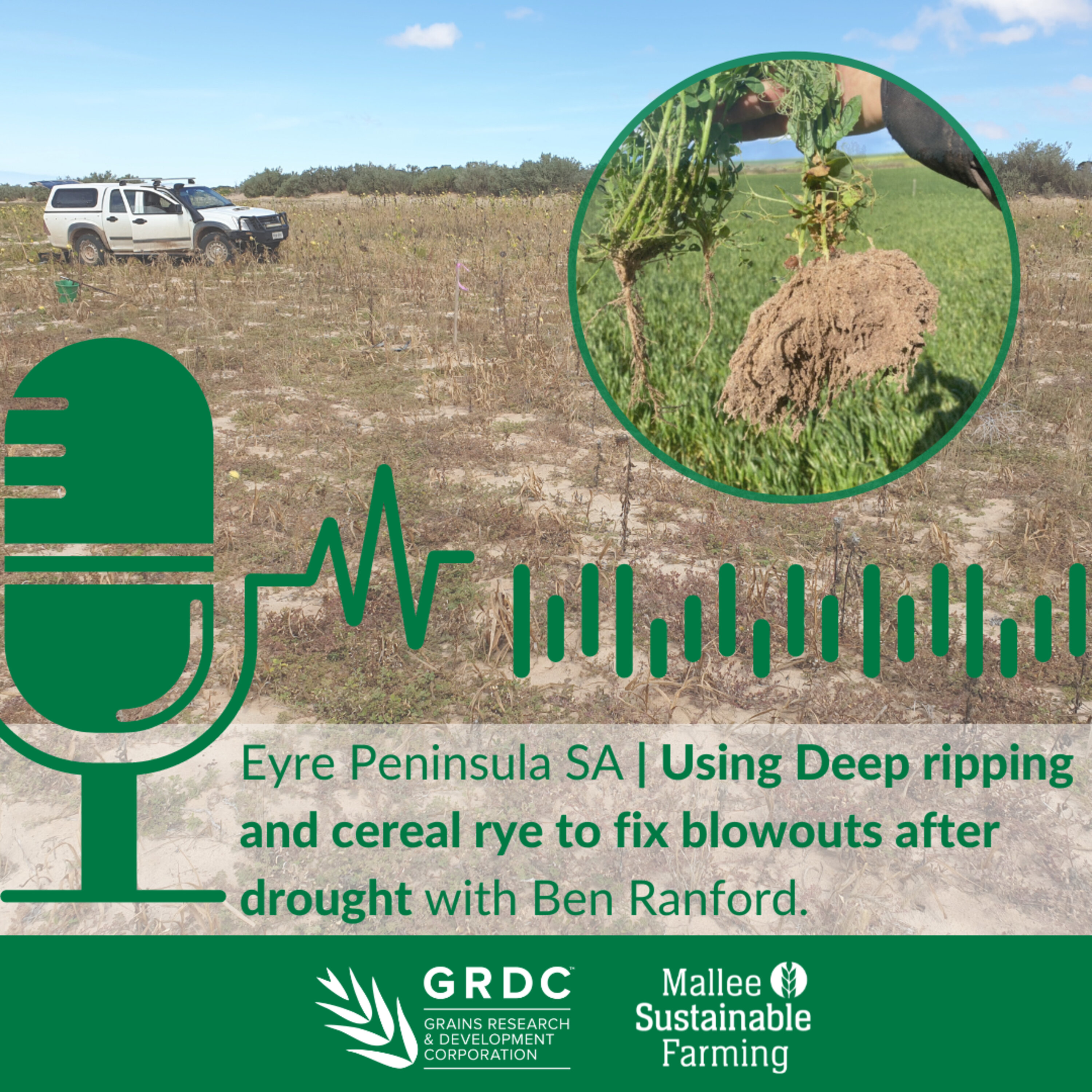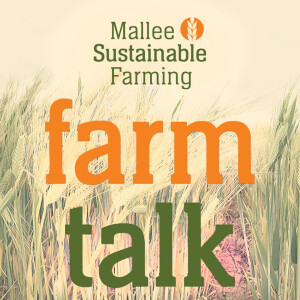
Using deep ripping and cereal rye to fix blowouts after drought
 2023-02-24
2023-02-24
Ben Ranford farms with his family at Cleve on the Eyre Peninsula. The area has an average annual rainfall of 330mm, with 250mm on average falling in the growing season. Their soils include some white non-wetting sands over clay but are mainly sandy loam. They generally work on a cereal and legume rotation, mainly lentils on the flats and vetch or field peas on the sandy rises, with canola also used in more promising seasons.
Ben finds that their sands are low in nitrogen, so legumes are essential in supporting soil carbon and biological activity. He uses a legume dominant mixed species green manure over about 10% of the farm each year.
Managing subsoil constraints
Throughout 2017 to 2020 the area suffered from challenging dry periods and damaging winds during critical growing season windows. The Ranford's have no livestock in their system, although they have still suffered some erosion damage on their sandy rises. To overcome these issues and protect their white sands, Ben has been deep ripping and delving while growing and returning crop residues to the soil, in addition to the use of other soil health improvement strategies.
To read more about Ben Ranford's story click here
For other GRDC soil preservation case studies click here
Support the show: https://msfp.org.au/about/membership/
See omnystudio.com/listener for privacy information.
More Episodes
 2024-10-20
2024-10-20
 2024-09-10
2024-09-10
 2024-08-30
2024-08-30
 2024-08-12
2024-08-12
 2024-06-24
2024-06-24
Create your
podcast in
minutes
- Full-featured podcast site
- Unlimited storage and bandwidth
- Comprehensive podcast stats
- Distribute to Apple Podcasts, Spotify, and more
- Make money with your podcast
It is Free
- Privacy Policy
- Cookie Policy
- Terms of Use
- Consent Preferences
- Copyright © 2015-2024 Podbean.com





